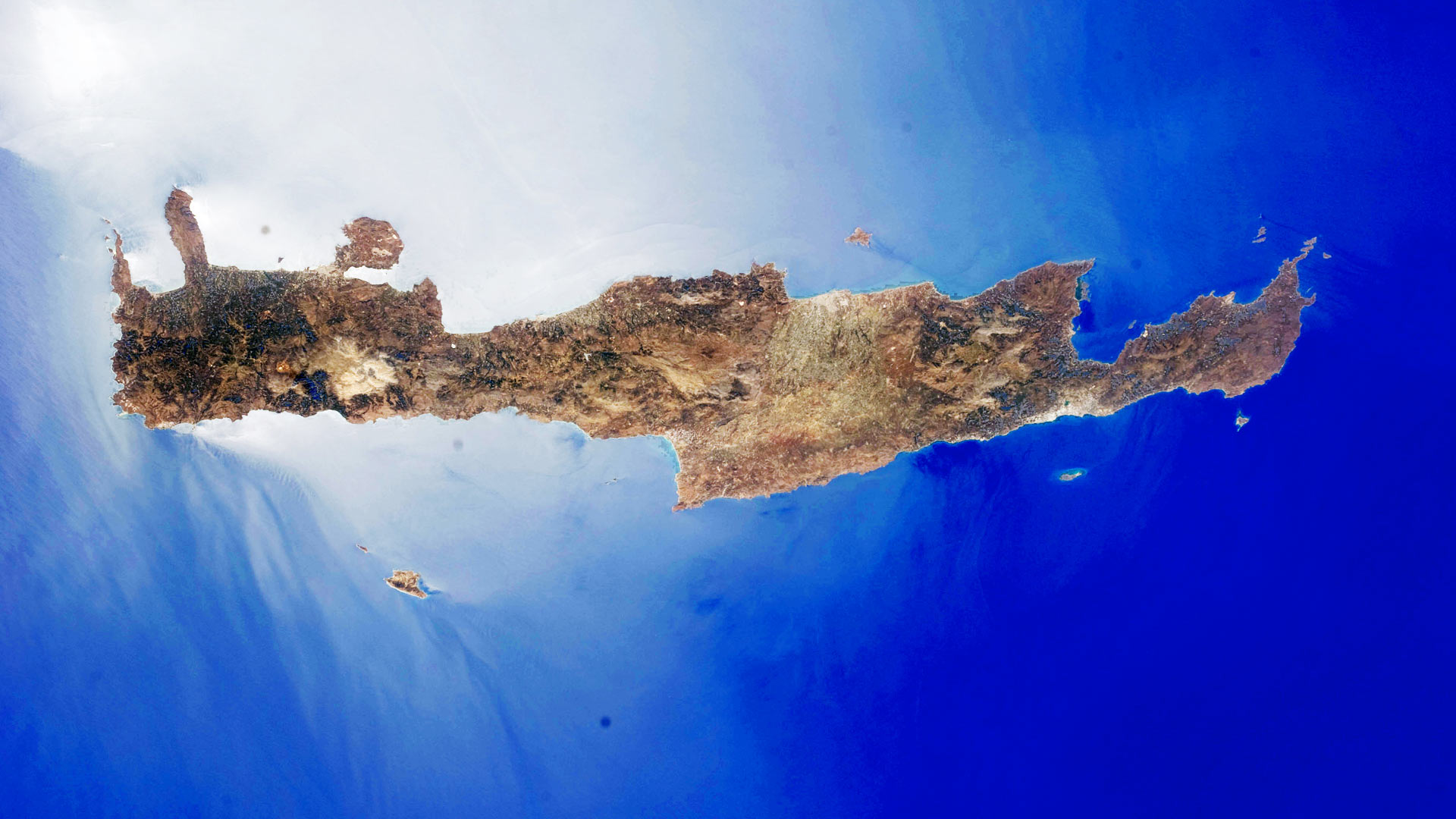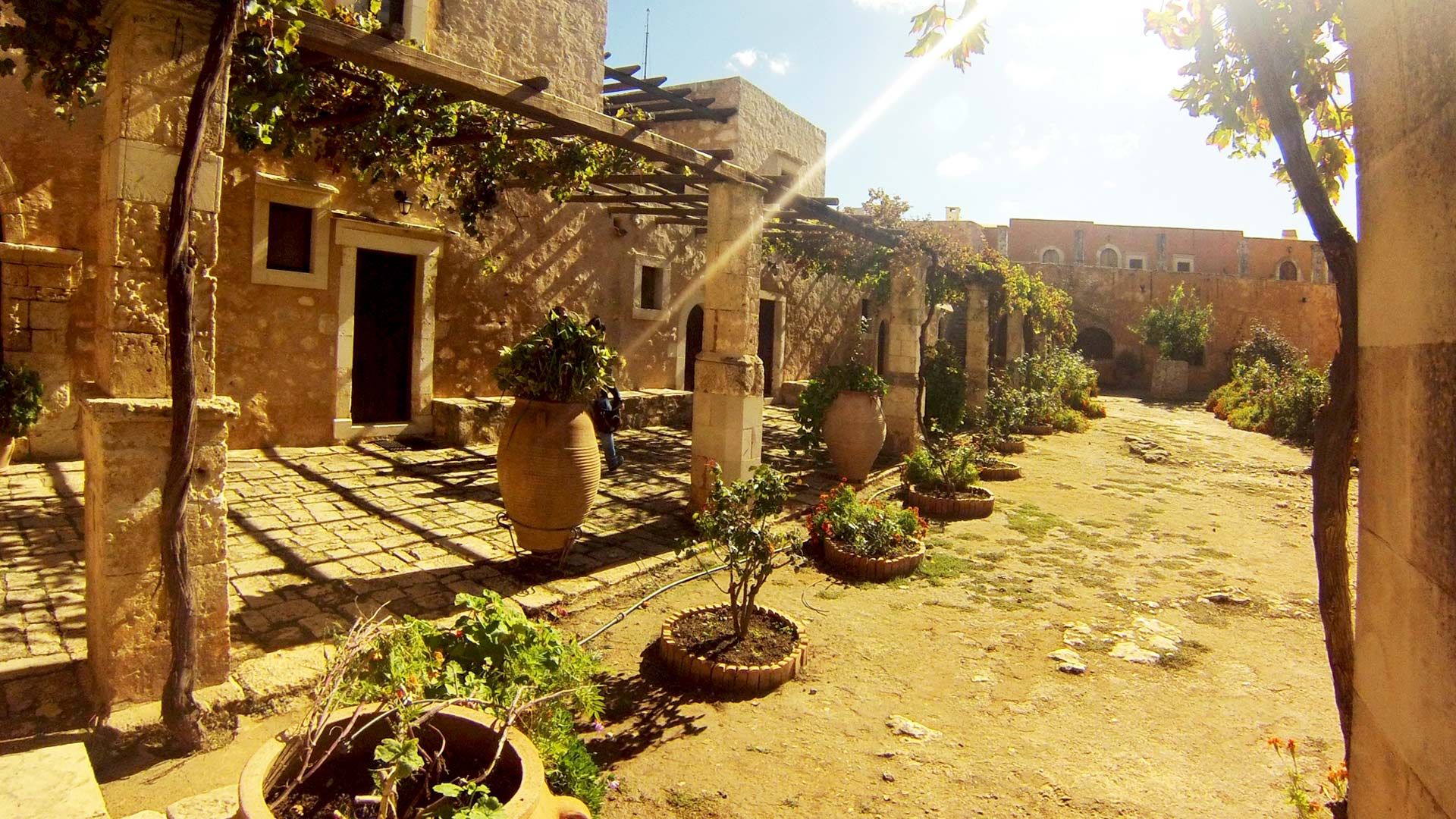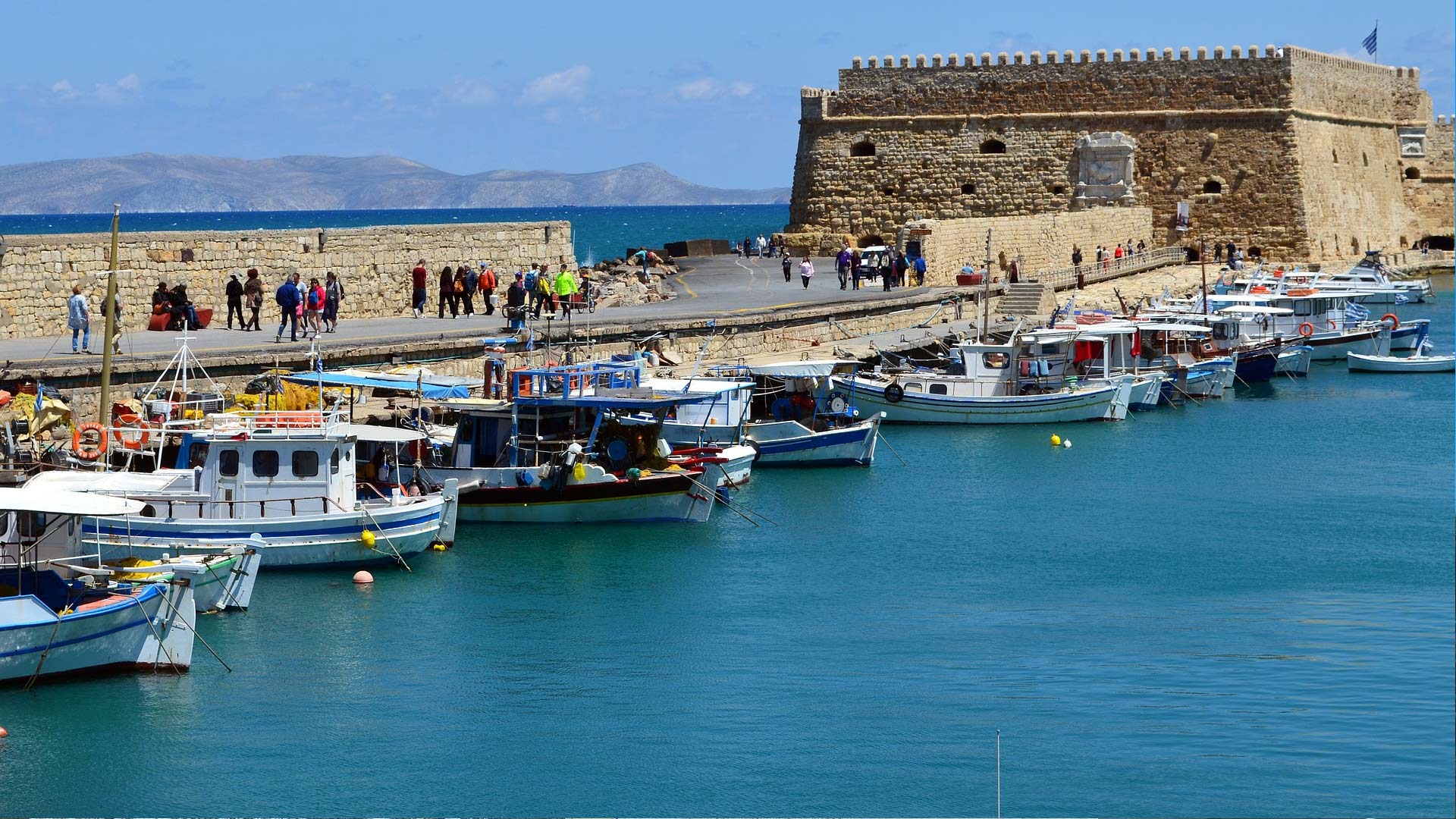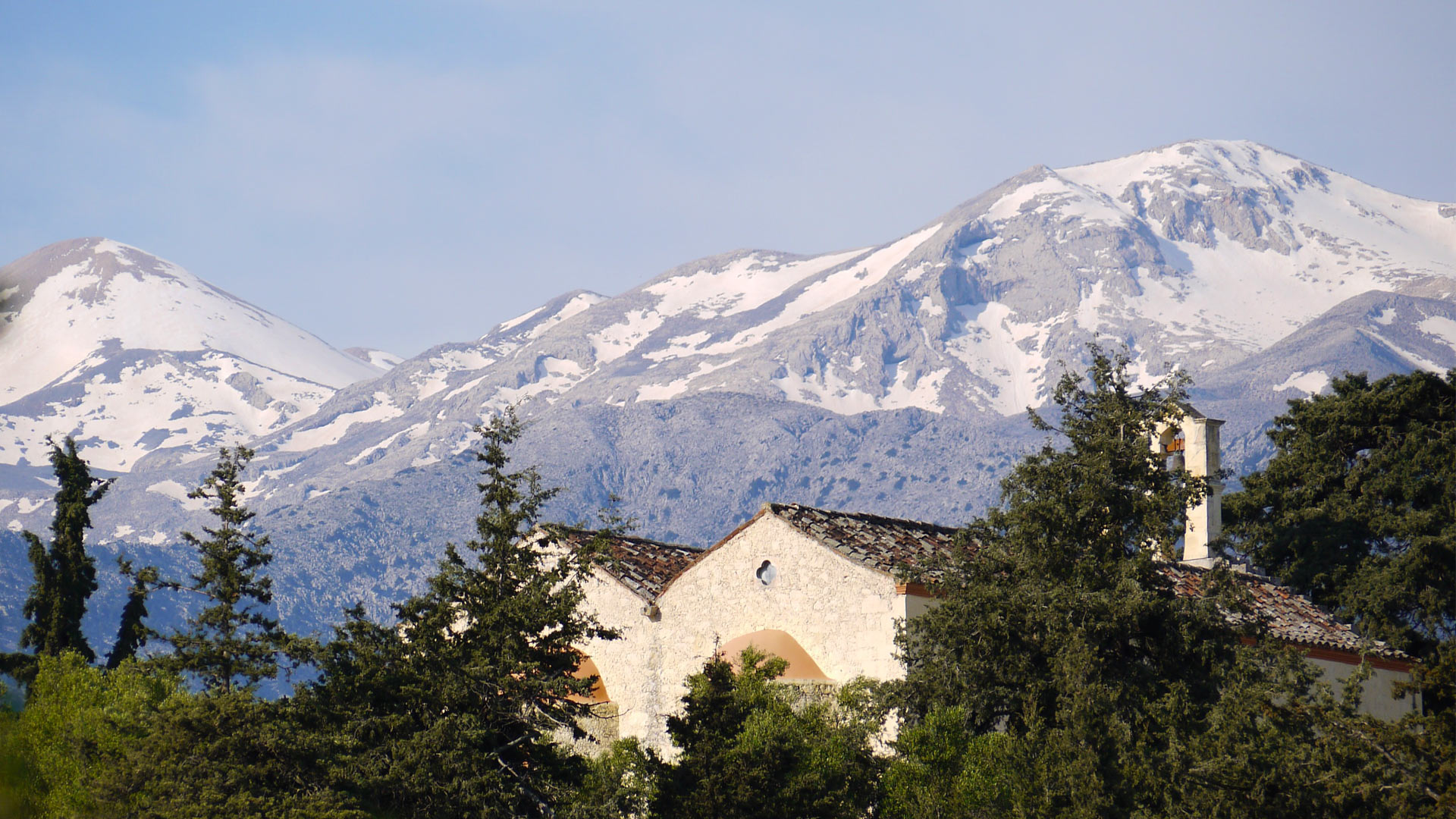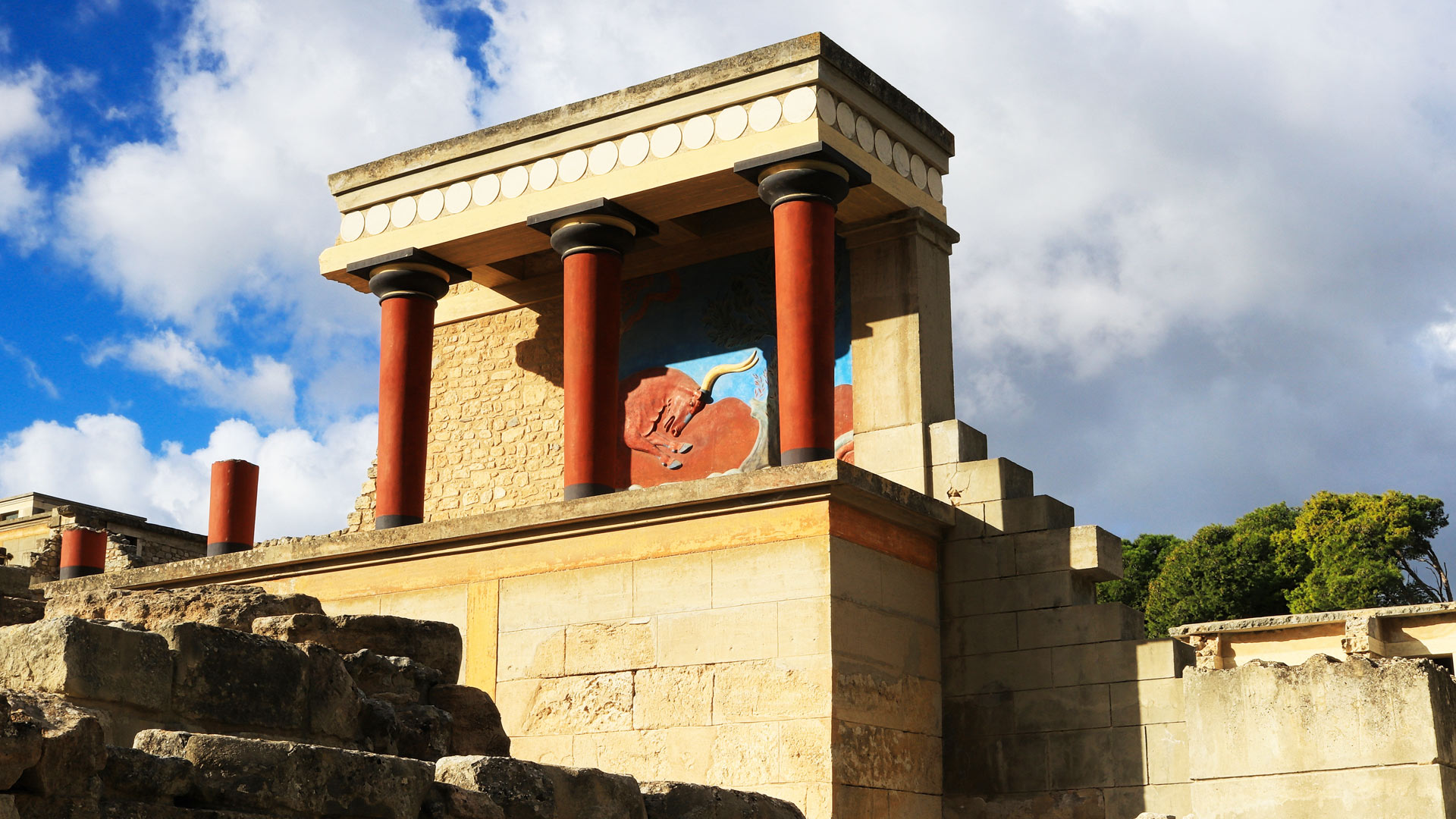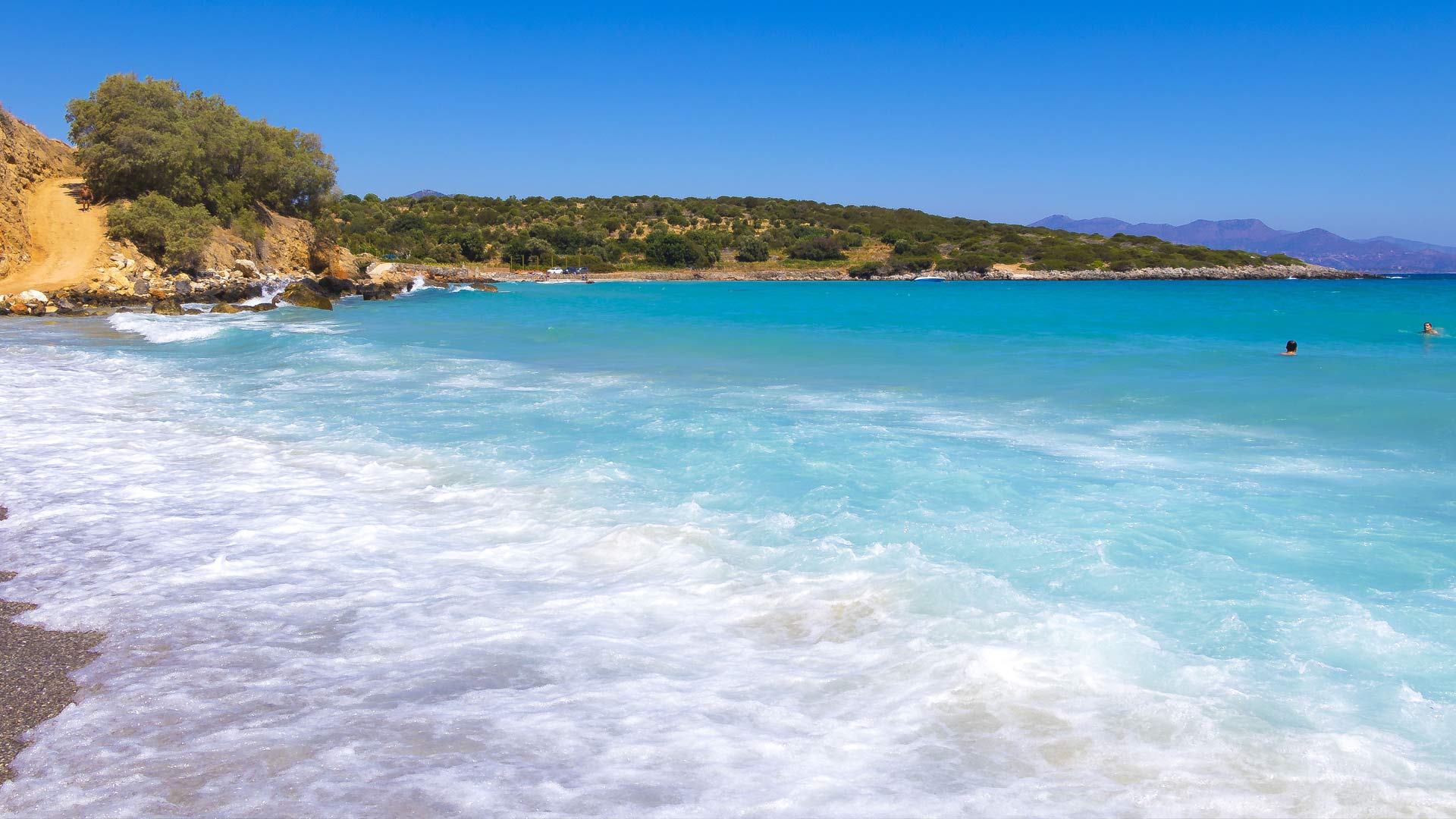There is nothing to look for and not find in Crete. Unbelievable natural riches, unique cultural monuments from the lengths and backs of history, gourmet treasures and modern infrastructure, but above all the authentic soul of the hospitable Greek.
Crete is a unique and unique place. It is the largest island in Greece and the fifth largest in the Mediterranean. It is only 300 kilometers from Africa and its total coastline reaches 1,046 kilometers. To the north it is covered by the Cretan Sea, to the south by the Libyan Sea, to the east by the Karpathian Sea and by the west by Myrtoos. Her main cities are Heraklion, Chania, Rethymno, Agios Nikolaos, Ierapetra and Sitia. The great island of Crete has been a crossroads of Europe, Asia and Africa since ancient times, being a point of contact and feedback for major cultures. The influences he has received appear in the scattered archaeological sites as well as in the culture of its inhabitants.
Crete is the land that gave birth and nurtured the Father of the gods Zeus and the cradle of pre-Hellenic Minoan civilization. Here, every corner has been celebrating brilliant monuments of all historical periods (palatial buildings, prominent ancient cities, carved tombs, Byzantine churches and monasteries, Venetian castles and Ottoman knights).
On this island, the Apostle Titus chased some of the early Christians. The monasteries of Crete are indissolubly linked to the history of the island as they have played an important role in the nation's critical moments. The land of this place is watered with blood of many heroes in historical battles during its long history, ancient and new.
In Crete, great painters, scholars, poets, such as Dominikos Theotokopoulos, Vincentzos Kornaros and Nikos Kazantzakis, politicians such as Eleftherios Venizelos and singers such as Nikos Xylouris, as well as great musicians, master of lyre, lute, violin and the bulgarians who enlightened life, love and death with music, dance, lyre and mantinades.
What makes Crete stand out is the unique combination of natural wealth, history, culture and tradition. From the imposing palaces of Knossos and Phaistos to the steep ravines and wild beauty in the gorge of Samaria, which is the longest gorge in Europe and from the tranquil and deserted beaches of the Libyan Sea to the bustling and crowded beaches on its northern coast island, Crete invites its visitor to explore it. Contrasts are the norm in this island, both in the environment and in its people. Proud, uncompromising but warm, friendly and very hospitable. Cretan hospitality is famous all over the world, and only a short while can you experience this feeling.
Historic villages that produce culture, legendary mountain peaks, caves and monasteries show every traveler the rare nature of Levantogen Crete. Fodele - The homeland of El Greco
East of Bali, amidst orange trees, is the beautiful Fodele which is the birthplace of El Greco. Here, there is a museum dedicated to the great painter as well as the Byzantine church of the Virgin Mary (1383), whose frescoes inspired the great painter to deal with hagiography.
Anogia
On the hillsides of Psiloritis is the most famous mountain town of Crete, with a lot of tourism and many shops of folk art, where the famous handmade weavings of the women of Anogia stand out. Music, singing and dances never stop here.
Caves
To the south of Bali, it is worth visiting two beautiful caves on the slopes of Psiloritis: the Cave Sfendoni, in Zoniana and the Idaho Andro, the most famous cult of antiquity. It is a huge cave, at an altitude of 1540 meters, where, according to mythology, Rea hid Zeus so that his father does not swallow him Saturn. The myth is full of the presence of the Couretes who beat their shields rhythmically when the baby was crying so that Saturn would not hear it. To the west of Bali, between two bays, there is the village of Panormos and from there you can visit the wonderful Melidoni cave with the magnificent domes, the thousands of stalactites and the legends that want the place of the Minoan worship to Talo the ancient giant robot guarded Crete from the invaders.
Settlement Margarites
Since the Minoan times, the inhabitants of this beautiful, traditional village for the pottery keep the love. A great number of potters serve the art of clay, and here it moves it to the younger generations and tells visitors to the site, through a very interesting exhibition, the "Ceramic Margarites Collection", with educational programs and tours at the local workshops, showing the modern evolution of angioplasty.
Monastery of Arkadi
Anyone who reads the story of Crete will stand in awe at the pages that mention the Cretan sacrifice and their endless struggle for freedom that culminated in 1866 when the brave, besieged, defenders of the monastery blew up their silicon warehouse by killing them with themselves and many Turks. The monastery of Arkadi is dedicated to the memory of the Transfiguration of the Savior and the saints Constantine and Helen, and is a characteristic monument of the Cretan Renaissance of the 16th century with remarkable participation in the fields of education, copying of manuscripts and goldsmithing.
Monastery of Attalis
About 5 km south of Bali is the Monastery of Atali dedicated to Saint John dating back to the 17th century. Fairs Close to Bali is the picturesque monastery of Panagia Harakiani. At his feast on the 15th of August there is a big festival. Two other festivals in the area include St. John's at the Atali Monastery on August 29, and the Holy Trinity.
Ancient and modern at the same time, charms with the alternation of countless cultural elements that are lost to the beginnings of history, arrive to our day and continue to build a bright future.
Heraklion is the largest city and capital of Crete and is located in the middle of the island's northern coast. It has a population of about 130,000 and is ranked 4th in the largest cities in Greece. It has the largest port and the largest airport in Crete, the International Airport "Nikos Kazantzakis", the third in arrivals, in the country. The port of Heraklion was awarded as the second best in the world, with many daily destinations and many cruise ships.
Heraklion Prefecture's hotels occupy half of Crete's beds, most of its beaches on the north side are organized and crowded in contrast to these southern coasts in the Libyan Sea, which are characterized by their tranquility.
In his nearly 3,000 years of life, Heraklion has demonstrated a turbulent history. An admirable civilization flourished here, in antiquity, the Minoan civilization, with its capital Knossos. The first settlement, called Heraklion, was founded in the 9th century BC. It met earthquakes and disasters but during the Byzantine period it flourished again. He met Arab conquerors and corsairs, Venetian and Turkish dynasties but resisted vigorously and after many struggles and sacrifices he was freed to re-flourish and showcase great people of letters such as Nikos Kazantzakis and Vicensos Kornaros, art and culture, trade and of politics like Venizelos.
Sightseeing of Heraklion
The signs of all these times and influences are reflected in the sights that every visitor of Heraklion can admire, such as monuments, squares, streets, museums, churches etc.,
- Koules: The Venetian fort at the entrance of the harbor, the symbol of the city of Heraklion.
- The old Venetian harbor and the new harbor in Heraklion.
- Eleftheria Square: The large square of Heraklion with the Gate of St. George, the Prefecture and the Archaeological Museum.
- Lion Square or Eleftherios Venizelos Square, where the Morozini Fountain is located, the famous fountain with lions.
- The Bembo Fountain, a magnificent Venetian fountain next to a Turkish monument at Kornarou Square.
- Kornarou Square, with the statues of Erotokritos and Aretousa from the homonymous work of the great Cretan poet Vitsentzos Kornaros.
- The tomb of Nikos Kazantzakis at the Martinenego bastion.
- The Venetian Loggia, today's Town Hall. St. Mark's Basilica.
- Agios Minas - The cathedral and patron saint of Heraklion
- The Temple of Peter and Paul of Dominican.
- St. Mark's Basilica, the Municipal Art Gallery of Heraklion.
- The Venetian Loggia, the most elegant Venetian monument in Crete.
- The temple of Saint Titus.
- 25th August Street, "Plane Street", the most beautiful pedestrian street in Heraklion with many preserved neoclassical buildings.
- The market on 1866.
- Dadalou Street: The commercial pedestrian street in the heart of Heraklion.
- Korae Street (pedestrian street), Heraklion's cafes, the lively nightlife boulevard, Bentenaki, the Talos shopping center, the Pancretan Olympic Stadium.
- The Aquarium, with thousands of species of fish, sharks and rare species. It is the largest aquarium in Greece and it organizes spectacular attractions.
Shopping Centers, Banks, Parks, Hospitals, Universities, Cultural Areas, Theaters and Cinemas, complement the physiognomy of a bourgeois city that caters to every demand and buries life and grace.
Museums
Archaeological Museum of Heraklion
Historical Museum of Crete
Natural History Museum
Combat Museum of Crete and National Resistance
Museum of Fine Arts of Heraklion
Museum of Saint Catherine
It is worth discovering the pride of the Cretan people, a wild and unpredictable landscape that enchants the lovers of nature and adventure. Snow-covered peaks, caves, rivers, ravines and canyons, forests and oranges, monasteries and picturesque villages that gave birth to gods and heroes.
Crete is a place with intense geophysical alternations, such as mountains with high peaks, sharp rocks, ravines and caves, as well as sandy beaches, valleys with olive groves, vines and orange trees. To the west are the tops of the White Mountains, the Lassithi Mountains are projected to the east, while Psiloritis is among the prefectures of Rethymnon and Heraklion.
The ancient mountain of Ida or Psiloritis, in the Cretan dialect, is the heart of the whole of Crete and the pride of every Cretan. It is a strange oblong mountain, with its few peaks, the highest of which reaches 2456 m and it is snow-covered all year long. Between rivers, gorges, gorges and plateaus are spreading, like the Seventh in Malevizi, Livadi in the mountain of Krousonas, the smaller Xerolimis and Vroulidis in Anogia and Nida with Idaion Andros, the cave where Zeus grew according to myth . To the northwest of the mountain, towards Mylopotamos, the terrain is smooth and there are large settlements, crops and pastures. On the contrary, the southeastern side of Psiloritis is wild with cliffs. Forests and rivers descend through beautiful gorges where thousands of humble endemic plants and herbs grow next to mitata (small, circular, stone-built farm buildings).
There are more than 3,000 caves in Crete and many of them are visited. The people here have in their DNA reports of ancient myths, ancestral fighters (in the caves of Ideon Andron, Patsos and Melidoni), holocausts, sacrifices for freedom and proud victories, all of which express their daily way of life, singing , dancing their feasts and customs, displaying a unique image of civilization. They invite their guests to live "at the height of their dreams."
Natural Park Psiloritis Psiloritis
Natural Park was founded in 2001 by the company AKOMM - Psiloritis Development SA OTA with the scientific support of the Natural History Museum of the University of Crete. Due to its rich geography, its beautiful landscape and undeniable history and tradition, Psiloritis Nature Park was immediately integrated into the European Geoparks Network and a short while later in the UNESCO Global Geoparks Network, thus achieving worldwide recognition of this place. Since then, she has been actively involved in events and efforts to protect and enhance the environment, natural and cultural heritage, as well as sustainable, local development through geotourism and other forms of alternative tourism.
KNOSSOS & PHAESTOS
It has been here for 9,000 years. They taught culture, beauty, the arts, shipping and commerce. They met earthquakes, disasters, barbarian conquerors, corsairs, Venetians, Ottomans, and Germans, but they stand proudly and show the miracle born in this place all over the world.
KNOSSOS: Very close to Heraklion, there is the ancient Knossos. The Minoan palace is the main visiting area of Knossos, an important city in antiquity, with a continuous life from the Neolithic to the 5th century. According to tradition, there was the seat of wise King Minos. Exciting myths, the Labyrinth with the Minotaur and the Daedalus with Icarus, are linked to the palace of Knossos. It was inhabited since the Neolithic era (7000-3000 BC). a major earthquake destroyed the first royal palace, which was rebuilt but was eventually destroyed around 1350 BC. from a big fire. After excavations it came to light and today it is visited, with pieces of it in perfect condition. It was multi-storey and covered an area of 20,000 sq.m. Signs of Linear B writing, unknown until now, impressive frescoes with bright colors and original drawings in corridors and rooms, colored mortars, original architectures and constructional constructions (luminescence, polyhedra, composite drainage and water supply network), make this palace, a world miracle. Courtyards, sacred wings, treasures, hypostyle crystals, alabaster throne, mansions, staircases, elevated galleries, stone-paved streets, theater and cemeteries, spread out under the hot sun of Crete thousands of years ago, causing their modern visitors, surprise and awe the achievements of our ancestors.
PHAESTOS: Phaestos dominates the fertile valley of Kato Mesara, surrounded by imposing mountains such as Psiloritis. To the south lies the Libyan Sea. The mild and warm climate of the area affected the development of Phaistos, which was the second most important center of the Minoan civilization after Knossos and the most important and wealthy city of southern Crete. According to mythology in Phaistos, the dynasty of Radamantha, the son of Zeus and his brother Minos, reigned. It has flourished since the mid-3rd millennium BC. arrived to control the rich plain of Mesara and the exit to the sea and the ports of Africa. It became a rich, powerful, multi-human and independent city and its kings founded great palaces. The first was built in 1900 BC. was destroyed by an earthquake and in its place was built a new, more imposing, to which most of the relics belong, today. Both the ruins of the ancient city and some areas of the palace are accessible.
Sandy or pebble, windy or windy, shallow or deep, cosmopolitan or remote, the many beaches near Heraklion cover all tastes and offer their crystal clear waters for swimming, water sports and endless fun.
- Ammoudara, 5 km west of Heraklion, is a very well organized beach with umbrella deck chairs and water sports facilities. Ideal for fans of windsurfing, it has many accommodation, restaurants and taverns.
- Hersonissos 27 km east of Heraklion. It is one of the most popular tourist resorts in the world, with modern tourist infrastructure, large hotel units and lively nightlife. It is worth mentioning that the natural harbor of the area was also the port of the ancient city of Lyttos. In Hersonissos you can find beaches for a tranquil swimming but also bustling beaches with many people, music and sea games!
- The Limanakia. Small, beautiful sandy beaches near Hersonissos with pebbles and rocky seabed, ideal for snorkeling. There is a beach of Nudists.
- Stalida is a sandy beach with shallow water and good tourist infrastructure. When strong winds blow, gigantic waves are created.
- Matala in southern Crete, 70 km from Heraklion. It is a small, fishing village with a famous, beautiful, sandy beach, clean, crystal blue waters and small caves carved in the rocks, unique scenery. With a remarkable tourist infrastructure, it attracts a lot of people because of its landscape and history as the center of the "hippies" and favorite beach of famous rock singers of the 70s, such as Bob Dylan, Janis Joplin and Cat Stevens.
- Agia Pelagia 24 km from Heraklion is one of the most popular summer destinations thanks to the clean sea, the sheltered beach, and its modern infrastructure.
- The beach of Malia is 37 km east of Heraklion and is one of the most famous and popular beaches of Heraklion. Sandy, clean and well organized. Here you will have the opportunity to do water sports and enjoy staying, eating and having fun.
- Fodele, 30 km west of Heraklion, with trees, river and green, has a beach full of contrasts. There are large hotel units, traditional tavernas, cafes, small Byzantine churches.
- The beach of Lenta with crystal clear waters, fine pebbles and plenty of shade.
- The beach of Tsoutsoura in the south of the Prefecture with ancient finds, sand, clear waters, trees, traditional taverns and cafes.
- The wonderful beach of Three Ekklisies is one of the cleanest beaches in the south, a destination for lovers of tranquility.
- Kali Limenes in the south is a small, traditional village with one of the most beautiful beaches of Crete with a windy, pebbly coast and clear blue waters.
- Kommos beach near Matala was once the port of Phaistos (2000 BC) It is a sandy beach with a special gray color in the sand. It is one of the longest and cleanest beaches in Crete and there you will find the nests of the protected species Caretta - Caretta. Here is a beach of nudists behind the trees and sand dunes.
